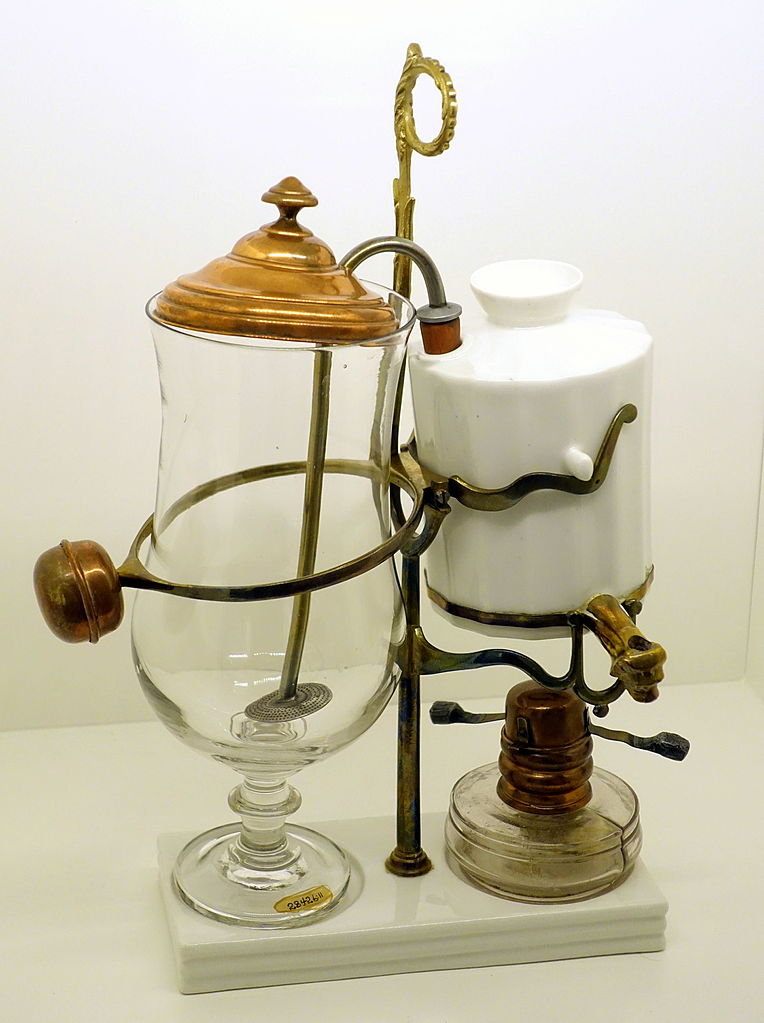My Great-Great-Grandad, The Engineer Who Invented A Coffee Pot [Hackaday]

In the study of genealogy it’s common to find people who will go to great lengths involving tenuous cross-links to establish royalty or famous figures such as George Washington or William Shakespeare in their family tree. There’s no royal blood and little in the way of fame to be found in my family tree, but I do have someone I find extremely interesting. One of my great-great-grandfathers was a Scottish engineer called James R Napier, and though his Wikipedia entry hasn’t caught up with this contribution to 1840s technology, he was the inventor of the vacuum coffee pot.

Vacuum Coffee Pots: Impressive, But Slooow
Just what is a vacuum coffee pot, and what makes it special? The answer lies in the temperature at which it infuses the coffee. We take for granted our fancy coffee machinery here in the 21st century, but a century and a half ago the making of coffee was a much simpler and less exact process. Making coffee by simply boiling grounds in water can burn it, imparting bitter flavours, and thus at the time a machine that could make a better cup was seen as of some importance.

The Napier coffee pot has two vessels, one of which is sealed save for a tube that passes from near its base into the bottom of the other which is open to the atmosphere. The sealed vessel is filled with water and heated, and the second is filled with coffee grounds. As the water gets hot, it produces water vapour that slowly displaces the hot water through the tube into the coffee grounds. Eventually nearly all the water has been pushed out, at which point the heat is removed and the device’s party piece performance happens. The remaining water vapour condenses, producing a vacuum that quickly and noisily sucks the coffee back into the first vessel. There is usually a gauze filter on the tube to prevent the grounds being sucked through with the liquid.
The key to the process is that the water touching the grounds never boils, and thus the coffee never reaches a temperature at which it degrades. James R’s original pot had two separate vessels side-by-side, but it’s more normal to see them today with one vessel atop the other. A few years ago I bought my parents a Bodum vacuum coffee pot because of the family association, and while I can say that it made a very nice cup of coffee the whole process was a bit of a tedious performance once the novelty had worn off.
As an engineer I am fascinated by my ancestor’s work, and while my field of electronics would have been unknown to him in the 1850s, I’m sure had he been alive in this era he’d have been equally at home with the tools on my bench. Perhaps the most interesting reflection from researching this piece comes not from his work though, but from considering the difference of opportunity between the two centuries.
If I were to assemble all my great-great grandparents in the same room they would be a diverse group, alongside the engineer would among others be a policeman, at least one textile worker, a shopkeeper, and a few farm workers, from various corners of the British Isles. Several of their children and grandchildren became engineers too, I carry the concentrated engineering DNA of more than one family, but they were better able to realise that potential because of the increased access to education that came with the twentieth century. As I savour my coffee I realise that maybe my view of technological advancement has overlooked the obvious, before all the semiconductors and computers came the opportunity for advancement based on achievement rather than wealth or patronage.
Coffee cup: Julius Schorzman, CC BY-SA 2.0.

![my-great-great-grandad,-the-engineer-who-invented-a-coffee-pot-[hackaday]](https://i0.wp.com/upmytech.com/wp-content/uploads/2023/05/121425-my-great-great-grandad-the-engineer-who-invented-a-coffee-pot-hackaday.jpg?resize=800%2C445&ssl=1)